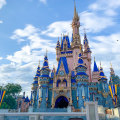Are you looking for a fun and educational activity to do with your kids? Science experiments for kids can be an exciting way to introduce them to the world of STEM (Science, Technology, Engineering, and Math). From simple experiments involving everyday items like baking soda and vinegar, to more complex projects involving electronics, these science experiments will help your children explore the fascinating world of science in a hands-on and interactive way. Not only will they have a blast, but they'll also be learning important scientific principles in the process! Read on to discover some of our favorite science experiments for kids.Science experiments are a great way for kids of all ages to explore the scientific world around them. From growing crystals to making lava lamps, these fun and simple experiments help children learn about science in an enjoyable way.
To get started, here are some of the different types of science experiments that can be done with kids.
Chemistry Experiments
: Chemistry experiments are often a favorite among kids as they provide lots of fascinating results and reactions. One popular experiment is making a volcano by combining baking soda and vinegar. This causes a chemical reaction that results in a fizzy eruption.Another chemistry experiment is creating lava lamps by mixing oil and water with food coloring. As the oil floats to the top, the food coloring creates a mesmerizing effect.When conducting these experiments, it's important to remember safety first. Make sure to wear protective eyewear, gloves, and an apron, and work in a well-ventilated area. Be sure to explain the safety precautions to your kids before starting.Once you've gone over the safety tips, it's time to explain the scientific concepts behind each experiment.
For example, when making a volcano, baking soda and vinegar react together to form carbon dioxide gas. This gas is what causes the eruption. In the case of lava lamps, oil and water do not mix but rather form two separate layers due to their different densities. The food coloring is drawn to the top layer due to its lighter weight.
Growing Crystals: Growing crystals is another exciting science experiment for kids that has amazing results. To get started, you will need Epsom salt (or any other crystal-growing substance), food coloring, hot water, and a jar or container of some sort. Start by pouring the Epsom salt into the hot water and stirring until it dissolves. Then add in food coloring for color.
Place the jar in a dark area and let it sit overnight. The next morning, you will have beautiful crystals growing on the side of the jar! When growing crystals, it is important to explain the scientific concepts behind this experiment. Through a process called crystallization, molecules in the Epsom salt solution arrange themselves into solid crystals due to their attraction to each other.
Making Volcanoes
: Another fun science experiment for kids is making volcanoes. To do this, you will need baking soda, vinegar, dish soap, red food coloring, a plastic container (such as a cup or bowl), and some small rocks or pebbles for decoration.Start by filling the container with baking soda and adding in some red food coloring for effect. Then pour in enough vinegar to make the mixture fizz up and bubble over. Add a drop of dish soap for extra bubbling power! Finally, add some small rocks or pebbles around the edge of the container for decoration.When making volcanoes with kids, be sure to explain the scientific principles behind this experiment. Baking soda and vinegar react together to form carbon dioxide gas.
This gas is what causes the eruption when it escapes from the volcano.These are just a few of the many science experiments that can be done with kids! With a little preparation and some basic materials, children of all ages can explore science in an exciting and educational way.
Chemistry Experiments
Chemistry experiments can be a great way to introduce kids to the world of science. From making lava lamps and growing crystals to creating a volcano, children can explore the fascinating chemical reactions and processes that take place in the world around them. A classic chemistry experiment for kids is making a lava lamp. By combining water, oil, and food coloring, children can observe the different densities of oil and water as they create an ever-changing light show in a jar or bottle.Making a volcano is another popular chemistry experiment for kids. By combining baking soda and vinegar, children will see a fizzing reaction which is the perfect representation of a real-life volcanic eruption. This experiment can be enhanced with the addition of food coloring or different liquids to create a more realistic and visually appealing result. With a few simple ingredients, kids of all ages can explore the exciting world of chemistry through fun experiments.
Whether they are creating a lava lamp, growing crystals, or making a volcano, these experiments are sure to engage and entertain children while teaching them about the wonders of science.
Make a Volcano
Making a volcano is a fun and educational science experiment for kids of all ages. The process of making a volcano teaches children about the chemical reactions that occur when baking soda and vinegar are combined. It also helps them understand the principles of pressure, density, and solubility. To make a volcano, you will need: baking soda, white vinegar, a cup, a spoon, red food coloring, and a tray or plate.Begin by filling the cup half way with baking soda. Add a few drops of food coloring to the baking soda to make it look like lava. Then pour the vinegar into the cup until it is almost full. When the vinegar is added to the baking soda, the reaction produces carbon dioxide gas.
This causes pressure to build up inside the cup which causes the mixture to bubble and foam out the top. To make your volcano look like an erupting volcano, place the cup onto your tray or plate and watch as the foam flows out of the cup. This classic science experiment is an exciting way for kids to learn about chemical reactions and physical properties such as pressure and density. Allowing children to engage in hands-on learning experiences such as this one helps to reinforce scientific concepts and make learning fun.
Grow Crystals
Growing crystals is an easy and fun science experiment that kids of all ages can enjoy.Crystals form when molecules of a substance come together and arrange themselves in a repeating pattern. This process can be easily demonstrated with a few simple household items. To grow crystals, you will need a shallow container, such as a jar or bowl, a clean rock or piece of charcoal to act as the base, and a solution of the crystal-forming substance. Popular choices for crystal-forming substances include epsom salt, sugar, baking soda, alum, and Borax.
To begin, fill the container with enough of the solution to cover the base. Place the base in the container and allow it to sit undisturbed for several hours or days. As the solution evaporates, molecules will begin to form and attach to the base, gradually forming the crystal structure. Depending on the type of crystal being formed, the process can take anywhere from several hours to several weeks.When observing this process, children can learn more about crystals and the scientific principles behind them.
They can explore how different substances form different types of crystals and how temperature, pH levels, and other environmental factors can influence the crystallization process. By growing their own crystals, children can gain a better understanding of science and have fun in the process.These science experiments for kids are a great way to encourage children to explore the scientific world around them in an engaging and educational way. From chemistry experiments to growing crystals and making volcanoes, these activities can be enjoyed by kids of all ages. With easy-to-follow instructions and accessible materials, these experiments will help make learning about science both fun and rewarding.


